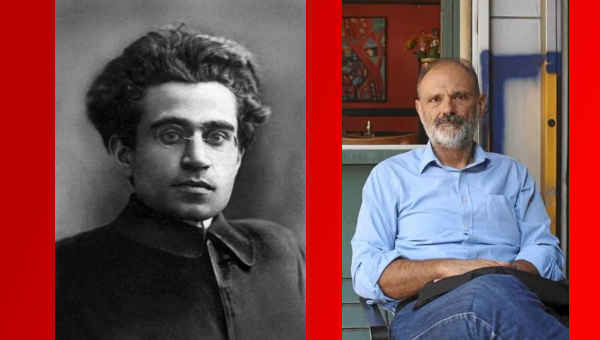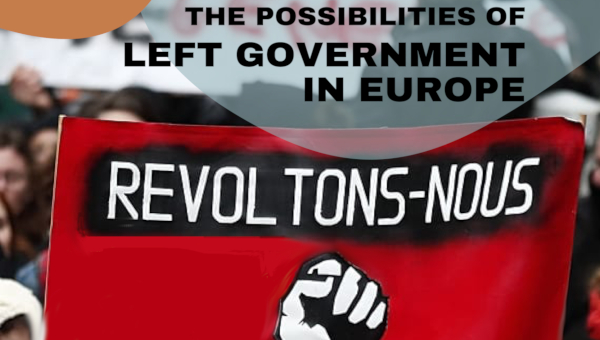Reinventing Socialist Politics
The varied left histories dating back to the long 19th century gained momentum during the tumultuous first decades of the 20th century and for some time after. They came to an end, at one point or another, between the military coup in Chile (1973), the elections of Margaret Thatcher (1979) and Ronald Reagan (1981), the political u-turns by Francois Mitterrand (1986) and Deng Xiaoping and the collapse of Soviet communism (1991). Since that time, communist parties in the West have shrunk to insignificance (with the partial exceptions of the French and Greek parties). Social democratic parties surrendered the countervailing power they had acquired during the long post-war boom to the imperatives of international competitiveness. New parties of the left that originally positioned themselves somewhere between social democracy and communism lost their points of reference and have proven, thus far at least, unable to invent a socialism for a world after Soviet communism and social democratic welfare-states.
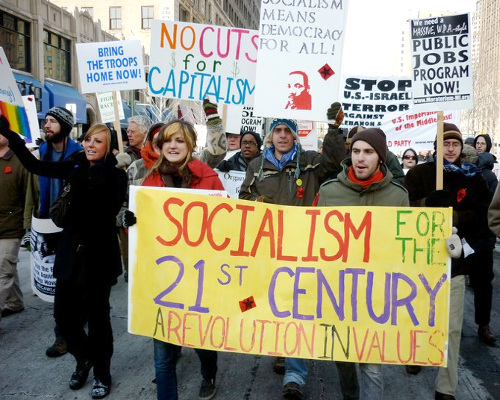 Social movements, often presenting themselves as more democratic and inclusive alternatives to party bureaucracies opportunistically chasing voters from all walks of life, in the case of social democracy, or, in the case of communists, claiming to be the vanguard of narrowly defined working classes, are in no better shape than the parties of the left. When they were new decades ago now, they could legitimately claim to voice the concerns of social strata – women, ethnic minorities, immigrants, and sexual minorities – excluded from the welfare-state bargain. It is also thanks to the new social movements that the ecological destruction that was one of the prices to be paid for prosperity and welfare-state expansion became an issue even staunch earth-haters can’t ignore. However, rather than forging one pluralistic and democratic movement, the new social movements quickly splintered into multitudes of single-issue campaigns. Ironically, in many cases, their professed anti-statism served as an entry ticket into an emerging NGO-world picking up the pieces from a welfare state already under siege from neoliberal anti-statism. At the same time, grassroots initiatives became more and more dependent on activists with a background in left party politics.
Social movements, often presenting themselves as more democratic and inclusive alternatives to party bureaucracies opportunistically chasing voters from all walks of life, in the case of social democracy, or, in the case of communists, claiming to be the vanguard of narrowly defined working classes, are in no better shape than the parties of the left. When they were new decades ago now, they could legitimately claim to voice the concerns of social strata – women, ethnic minorities, immigrants, and sexual minorities – excluded from the welfare-state bargain. It is also thanks to the new social movements that the ecological destruction that was one of the prices to be paid for prosperity and welfare-state expansion became an issue even staunch earth-haters can’t ignore. However, rather than forging one pluralistic and democratic movement, the new social movements quickly splintered into multitudes of single-issue campaigns. Ironically, in many cases, their professed anti-statism served as an entry ticket into an emerging NGO-world picking up the pieces from a welfare state already under siege from neoliberal anti-statism. At the same time, grassroots initiatives became more and more dependent on activists with a background in left party politics.
A List of Failures
More recent attempts to build a movement of movements, the approach suggested by the World Social Forum and its regional offspring, initially created much excitement. But they proved unable to sustain momentum. Massive mobilizations in the short-run, from the February 15, 2003 demonstrations against the war in Iraq to the Arab Spring and Occupy, shouldn’t conceal the fact that, at this historical juncture, social movements in themselves neither represent significant countervailing powers nor an alternative project to neoliberal capitalism.
Underlying the failures and defeats of left parties and movements from the late 1970s onwards was an unmaking of the working-class movement. This movement had developed collective agencies of change in industrial unionism and socialist parties over the 19th century, waving a variety of red and sometimes black flags. The movement moved into action during an ‘age of catastrophe’ from 1914 to 1945. The subsequent period of unprecedented economic prosperity saw the institutionalization of working-class movements and significant material gains for a majority of workers.
Whether this period of welfare state expansion really led to a profit-squeeze in the 1970s that undermined the boom, as some Marxists proclaim, or whether it was fuelled by flourishing consumer demand, as left Keynesians say, doesn’t matter much with regards to the fate of socialism. What matters is that ruling classes in the West saw the ‘new left’ and new social movements as forces that could potentially unlock the working-class majorities that had been successfully caged in the bureaucracies of welfare capitalism. Warding off this danger in the short run made it necessary to defeat or co-opt these movements before they built alliances with revitalized unions, left-wing social democrats or assorted neo-communist groupings. Inhibiting the return of future challenges from the left induced ruling classes to restructure production and distribution processes in such a way that the social fabric in workplaces and working-class communities was torn apart.
No matter how rigid the ‘life-worlds’ of workers and their organizations might have been, as long as they existed they allowed for the reproduction of the institutionalized power of the working classes. And they also served as a seedbed of their rebellious offspring. Destroying the social basis of left parties, unions, and social movements was the political intent of neoliberal politics as it emerged in the 1980s and, in the course of things, undermining the organizational base of socialists. The latter’s ability to organize and mobilize dwindled, their ideas no longer resonated with the very people they were meant to speak to.
The unmaking of the organizations of working classes through the 1980s ushered in a crisis of socialist ideas. Endless debates about strategies, tactics and goals in earlier times were exhausting, and at times inhibited real advancements, but they were the lifeblood of socialism. The more working classes were unmade by a combination of relocation, new technologies and new organizational forms of labour processes, the more socialist discussion became whistling in the dark. Against their best intentions, the insistence of socialist intellectuals on the continuing objective existence of working classes and their indispensable role in surplus value creation only underscored the weakness of socialism. It certainly didn’t do anything to mobilize anyone outside of the shrunken circles of socialist diehards.
Capitalism and its Discontents
While capitalists had every reason to celebrate their victory over socialism of any kind, they soon ran into troubles of their own making. The acceleration of profit expectations they had used as a lever to roll back wages, taxes, and social and environmental standards soon reached heights that could never be satisfied. Profit expectations were always ahead of the production of surplus value no matter how much restructuring spurred the latter. Moreover, realization of at least parts of the drastically increased surplus value required extending credit lines to income-stripped working-class households and fiscal authorities. Keeping the debt loads of workers at sustainable levels would have required raising wages and taxes, respectively. Yet, these were key factors used to push up the rate of surplus value. Consequently profit expectations, expressed through an ever-expanding baroque of financial products, and debt rose in tandem. This spurred accumulation up to a point, but accompanied by a continual cycle of financial and general economic crises – from the 1980s debt crises in the South and Eastern Europe, to the 1990s crises in Mexico, Asia and Russia, hitting Wall Street in 2001 and the entirety of American finance and the world market from 2008-10. Privatization of public assets, raids on social spending and new lines of credit for private households regularly ‘freed’ the collateral to kick-start another cycle of debt-speculation-driven accumulation over which course further layers of union-protected jobs would be downgraded to precariousness levels.
Not surprisingly, the downgrading of ever more layers of the working classes along with increasing downgrading fears among the salariat and petty bourgeoisie soon produced its discontent. The brighter Wall Street shone, the more people were standing in its shadows or at least fearing to become invisible in its shadows. Yet anyone who might have thought that discontent with capitalism, or with its neoliberal incarnation, would inexorably lead to a resurgence of socialist or other left movements was soon disappointed. Rather, such discontents found their expression in votes for social democratic parties in the 1990s, and even into the 2000s. However, the social democratic parties in power only produced
more disappointment as their ‘third-way’ politics only meant some minor shifting neoliberal policies. Explosions of protests, like the anti-globalization movement and Occupy, have expressed the political frustration. But so, too, and more sinisterly, has the emergence of right-wing populism.
The New Right-Wing Populism
Right-wing populism thrives because it allows the articulation of discontent within the neoliberal narrative of austerity and free markets. Indeed, it doesn’t have to invent and popularize a counter-narrative but can build on the contradictions between the neoliberal narrative and actually existing neoliberalism. One contradiction is that austerity was never meant as austerity for all, it was always propagated as the necessary price to pay to eventually see wealth trickling down from the top.
The question, then, is whether and for how long one has to pay the belt-tightening price. Right-wing populists simply suggest that belts of some chosen groups could be relaxed if only the truly undeserving ones would be radically excluded from well-paying jobs or any form of government assistance. The distinction between deserving wealth creators and undeserving rent-seekers or free riders is at the core of neoliberalism. Right-wing populists extend this division to include ethnically, religiously, or sexually defined groups amongst the deserving; and then mobilize discontent with economic and social conditions against these allegedly undeserving groups.
The other main contradiction between neoliberal ideology and its practice is that between the ideology of free markets and the omnipresence of the state. Whenever the invisible hand of the markets and the private appropriation of profits that lingers behind it needs a helping hand, the state lends it. Since this is a very visible hand, discontent may have its roots in the conditions produced by capitalist markets and the state, but it is usually the state that takes most of the blame. The reason is simple. It is the state which declines applications for unemployment benefits and sends the police to foreclose homes. It is the state that cuts services and raises fees and taxes for those whose gross incomes are already under austerity pressure. This makes it easy for right-wing populists to present the state as the culprit of the conditions produced by the state-market linkages that are necessary for capitalism to function at all. The logical conclusion, then, is ‘more markets’.
Right-wing populism, in short, is radicalized ‘free marketeering’ integrating different varieties of nationalist, racist, and religious fundamentalists united in their hate of the postmodern left with its feminists, environmentalists, civil-rights-advocates and socialists. This right-wing trajectory is what produces the clash of cultures, or better the Muslim fundamentalisms which conservatives have seen as history’s defining feature after the defeat of left challengers.
Not everyone chooses fundamentalism to articulate his or her discontent. Many just try to defend their moral values, often derived from the same religions that fundamentalists misuse for their hate-preaching. There are also people who clearly see that the clash of fundamentalism makes a world that’s already bad under neoliberal capitalism even worse and thus seek alternatives to right-wing alternatives. The question, of course, is whether there are existing left-wing alternatives and, if not, what’s to be done to build them.
Union Organizing
Union organizing is an obvious starting point for the building of left alternatives. Unions were an indispensable part of past socialisms, without necessarily being socialist themselves, and they will be for future socialisms, too. Increasing numbers of today’s post-welfare state jobs resemble those of pre-welfare state days in terms of insecurity, employer’s control of workers, and sometimes even wage-levels. Yet, the craft and industrial unionisms of the past that were, more or less, suitable at different points of capitalist development clearly have limits in today’s world of international networks of production and distribution. The challenge is to invent effective forms of organization and representation along the supply-chains of production. As these chains typically cut across borders, future union organizing also needs to be international to be effective. The duality of international rhetoric and national organizing practice that was so characteristic of past workers’ movements can’t be resurrected at current levels of internationalization of production and distribution.
Things are very different, however, in the public sector. Paradoxically if one considers neoliberalism’s animosity toward unions and the public sector, unions took a series of beatings but still survived while their private sector counterparts were either broken or marginalized. Despite the massive shift of union presence from the private to the public sector, though, the way most people think, including unionists at all levels, is still very much shaped by the relations between capital and labour that gave rise to unionism in the first place. Such thinking, along with mobilization and bargaining efforts based thereupon, contributes to the weakness of public sector unions who are not bargaining over the distribution between wages and profits but a share of tax revenue.
As neoliberalism turned tax payments more and more into a working-class privilege, public sector bargaining turned more and more into a distributional struggle between different segments of the working-class. As long as public sector unions and their actual and potential allies don’t address this issue, neoliberals of more centrist or fundamentalist persuasions find it easy to mobilize hard working private sector workers, whose unions they helped to destroy in the past, against allegedly pampered public sector workers whose unions they seek to destroy in the future.
This distributional struggle between private and public sector workers cannot avoid addressing the question of whether public sector workers provide services to both public and private sector workers or that public sector production only serves the upper classes. This question, of course, also raises the issue of who is paying the tax bill. These issues cannot be resolved in collective bargaining; such fiscal policies raise the question of working-class representation in the political system.
Party-Building
The significance of government policies might be particularly obvious in the case of public sector workers and their unions but that doesn’t mean that these policies aren’t of the highest importance to all workers. The policies decide the availability, or lack thereof, of public services and infrastructures, and who is paying for them. They also decide under which conditions private employers can hire workers or, in the case of undocumented immigrant workers, where the threshold for employers undercutting legal standards lies. Through its schooling, certification and immigration systems, states contribute to the fragmentation of working classes. Through financial sector regulation and the underwriting of private finances, via the issuing of government bonds, they also prop up the profit-expectations-generator used to squeeze workers of all stripes at different times and to different degrees.
The state is, from all this, necessarily a key arena of class struggle. This was long noted in the early socialist movement by figures like Rudolph Hilferding and Otto Bauer during the infancy of welfare capitalism, and was reiterated by the new left in the 1970s when ruling classes were turning against further welfare state expansion. If three decades of neoliberal counter-reform has not diminished the share of public spending measured against GDP significantly, it has changed its character drastically. The institutions that were developed during a time of welfare state expansion were restructured in such a way that, rather than mitigating the inequalities between wages and profits, they started to amplify them.
Working-class representation within the state through a socialist party is, then, crucial to fight further austerity and to win social reforms. It is equally important to build working-class capacities outside the state. Without such capacities, that includes left media and discussion and activist groups, parties get absorbed by the state rather than engaging in class struggle inside of it.
Changing the balance of power within the capitalist state – and eventually moving beyond it – requires the building of working-class capacities outside the state. And it also depends upon international cooperation with left parties and other organizations in other countries. The room for shifting the balance of power within a country is not only dependent on the social forces inside of it but also on the respective forces in other countries and the capacity to cooperate across borders. It took neoliberalism, whose hegemony seems impenetrable today, almost two decades, from the military coup in Chile until the collapse of Soviet communism, until it had consolidated itself into an international ruling bloc. Undoing this bloc and replacing it with a progressive alternative, which may or may not be socialist, might take equally long.
Where to Begin?
The reinvention of socialist politics starts on a level playing field. Soviet communism and social democracy, the actually existing socialisms of the 20th century, are gone and there is no reason to wish them back. Soviet communists waded through years of terror before establishing a paternalistic regime that allowed workers social advancement but also alienated them to a degree that they, the workers, didn’t raise a hand when sections of the ruling bureaucracy decided it was time to reinvent themselves as ruling oligarchy in a neo-capitalist system. Social democrats shared the communists’ paternalism but avoided, for the most parts, domestic terror, which didn’t stop them from engaging in neo-colonial warfare in the South. Dissident communists and social democrats, along with various anarchist currents, can rightfully claim that they suggested alternatives to the failures of actually existing communism and social democracy, but have to ask themselves why they never had the power to realize their socialist alternatives.
“We can be much more scientific and should use the accumulated experiences of past socialisms to draw from them lessons for a new, and still unspecified, socialism. But we should also dare to dream.”
Thus, nobody can say that his or her favourite variety of socialism is better than anybody else’s. One way or the other, all socialisms that were advanced in the 20th century failed either when they were in power or because they never got near it. What this history of failures and defeats leaves us, though, is an immense wealth of experiences. Socialists in the late 19th and early 20th century, who wanted to be so scientific, had to carry on a utopian element as they didn’t have the same real world experiences with socialism that we have today. In that sense, we can be much more scientific and should use the accumulated experiences of past socialisms to draw from them lessons for a new, and still unspecified, socialism. But we should also dare to dream. Without having an idea where we want to go, we sure won’t go anywhere. Such an idea can’t be but utopian, as it pertains to an unknown future. One of the lessons to draw from communist and social democratic experiences is that claims to know what the future will look like are delusional and harmful to socialist politics of whichever kind.
Ideas play a key role in reinventing socialism, indeed. This includes ideas about the future but also ideas about the understanding of the past and present, from which we can derive strategies to build a socialist future. The working classes of the past were made out of an amalgam of disparate struggles, and efforts to make sense of such practical efforts and failures in order to try something else the next time. The back and forth between practical efforts and theoretical reflection, were not confined to intellectual circles but also had a presence in the various counter-cultures of their respective times, forged collective identities and understandings that eventually constituted working classes as agents of change.
There is no reason to assume that the remaking of working classes will take a very different form from the original making of working classes in the long 19th century. We might actually already be part of this remaking. Protest waves around the World Social Forum, the wars against Afghanistan and Iraq, and Occupy and the Arab Spring didn’t yield many tangible results. Yet, they have established contacts between discontented people seeking left alternatives, and allow collective reflection about future steps. The recently revived interest in political organizing is one of the outcomes of these reflections. It rests on the idea that the changing-the-world-without-taking-power philosophy underlying those movements was one of the reasons for their failure. Another outcome is the absence of institutions that could preserve collective memories when mobilizations on the streets are at a low.
What can be done in North America at this point is to organize reflection about past struggles and strategies of socialists for the future in a more systematic way. Discussion groups that discuss left history, theoretical works and current struggles with an eye to supporting today’s conflicts and remaking working classes. Left theory is as much in need of reinvention as left practice. These groups might maintain contact amongst each other through various left media outlets. Members of these groups should also engage in various struggles. The point would be to engage activists in various campaigns into discussions about socialist possibilities, drawing on the ideas and experiences obtained in such campaigns, within socialist discussion circles.
The unmaking of the working-class and socialist movements means, in some senses, that we are starting over. In this setting, the Communist Manifesto might well be quoted to describe the immediate tasks ahead:
“In short, the Communists everywhere support every revolutionary movement against the existing social and political order of things.
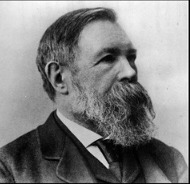
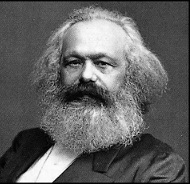
“In all these movements, they bring to the front, as the leading question in each, the property question, no matter what its degree of development at the time.
“Finally, they labour everywhere for the union and agreement of the democratic parties of all countries.”
Needless to say, at this point, socialists and communists today support every reformist movement. Unlike Marx and Engels writing the Manifesto on the eve of the 1848 revolutions, we are in a state of defeat without revolution on the horizon. The property question might be extended to the question of democratic organization of workplaces and the coordination between them. We now know well that the transition from private to state property alone does not lead to workers’ power and self-government. Socialists have built different types of parties since the Manifesto was written. These are all part of the left history, of failures and defeats, of resistances and victories. If it is safe to say that it is time to build a party of a new type, it is not yet possible to provide a detailed sketch of what this type will look like. •



